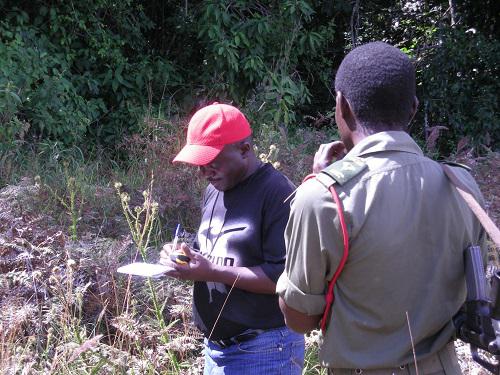Stella Sofasi
Other projects
13 Jan 2005
Conservation and Management of Degraded Lake Chilwa Wetland Ecosystem and its Threatened Water Bird Species, Zomba, Malawi
The aims of this project are to undertake research and eradicate the Invasive Alien Plants (IAP) which are currently causing massive loss of indigenous biodiversity through colonisation of habitats and altering of microclimate and habitat ecology.

Mr. Munthali and Mr. Mwaluwanda from Parks Dept.
Nyika National Park (NNP) is of global importance as it harbours unique biodiversity and contains 65% of species of endemic plants and animals (IUCN, 2004). Because of its unique biodiversity, NNP is one of the most important tourist destination centres in Malawi . However, NNP is currently under severe threat as its indigenous biodiversity is adversely being displaced by the pernicious invasive alien plants (IAP) such as Bracken fern (Pteridium aquilinum). The results have been alteration of microclimate and ecology of the national park which has lead to loss of indigenous species of plants, loss of suitable habitats for wildlife as 35% of the total land area of NNP has been fully colonised by IAP, adverse decline in number of wildlife in all affected sites and correspondingly decline in number of both local and foreign tourists visiting NNP.
The overall aim of this project is thus, to study and eradicate the IAP in NNP in partnership with local communities and stakeholders. The specific objectives of this project are to:-
(i) conduct systematic surveys to identify, assess abundance and distribution of IAP;
(ii) conduct environmental education and raise awareness among local communities, leaders, policy-makers and increase intersectoral cooperation on control of IAP;
(iii) integrate local communities and stakeholders in eradication programme of IAP;
(iv) establish community and sectoral based IAP monitoring and eradication committees; and
(v) reforestation colonised areas.